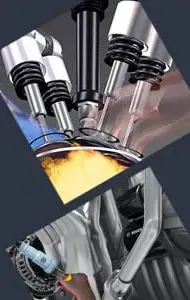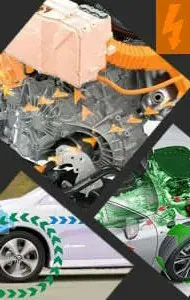Petrol Anti-Pollution

Course Overview
International strict guidelines imposed by the administrations require manufacturers to perform various technical modifications and develop new technologies to reduce and control emissions of exhaust gases. In this course the main technical solutions used by most manufacturers to reduce emissions from vehicles using gasoline as fuel will be studied. For this purpose the compounds derived from the combustion will be discussed in petrol. During focus primarily on systems reduction of hydrocarbons (HC), carbon monoxide (CO), nitrogen oxides (NOx) and carbon dioxide (CO2).
The main objectives of this course are:
- Know the combustion aspects relating to emissions of gases produced in the same and its effects on the environment and people.
- Know the different antipollution regulations and particularities of each.
- Know and analyze changes and motor exo-endo-motor technology and are responsible for reducing exhaust emissions. Its structure, components and operation.
- To provide students with the ability to diagnose and repair systems involved in reducing exhaust emissions, as well as the skills to deal with customers, drivers or car owners.
- Provide examples of manufacturers that incorporate systems for reducing exhaust emissions and the peculiarities of each of its technologies.
Course Topics
General (49 minutes)
Introduction
The explosion and combustion. The Otto cycle and the Diesel cycle
Knowledge Test
Regulation of exhaust emissions (35 minutes)
The exhaust gases
Anti-pollution regulations
Knowledge Test
Endo-motor anti-pollution systems in gasoline engines (271 minutes)
The compression ratio and design of the combustion chamber
Intelligent ignition systems
Management and control of air intake
High pressure fuel injection
Recirculation of exhaust gases
Recirculation of engine crankcase gases
The reduction of displacement in engines
Knowledge Test
Exo-motor antipollution systems in gasoline engines (339 minutes)
Catalysts, lambda probes and exhaust system architecture
Accumulation and reduction of nitrogen oxides (NOx)
Secondary air injection system
Canister or EVAP systems
Strategies to reduce weight
The aerodynamic drag
Resistance to rolling
Hybrid powertrain groups
Knowledge Test
OBD diagnosis (44 minutes)
Introduction
History of the OBD and its expectation
EOBD diagnosis
Telematics in vehicles
Knowledge Test
Self-assessment (51 minutes)
Self-evaluation
Average Duration
13 hours 14 minutes
Access This Course
Get access to this course and 30+ more topics by subscribing.
Subscribe to Access All Online Courses
We provide access to all of our online courses for 12 months with a one-time purchase.
£199 ex.VAT per year


